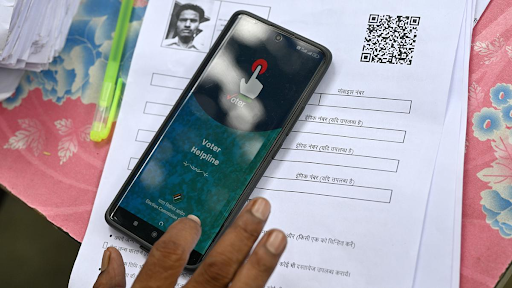




Copyright infringement not intended
Picture Courtesy: https://www.thehindu.com/opinion/op-ed/ending-discrimination-in-prisons/article68856625.ece
The Supreme Court ruled against caste discrimination practices in prisons to protect prisoners' fundamental rights.
The Supreme Court in Sukanya Shantha v/s Union of India case (2024), quashed prison rules that segregated prisoners based on caste. The Court highlighted that caste-based segregation is the violation of prisoners' fundamental rights, especially their right to equality under Articles 14 and 15 of the Constitution.
Important Judgements related to Rights of Prisoners |
|
|
No discrimination based on Social status or economic background |
|
|
Calcutta High Court Judgement (2012) |
|
The Supreme Court ruled that jail manuals include many unconstitutional provisions that violate prisoners' rights and promote caste discrimination, which seriously impact underprivileged groups; Scheduled Tribes (ST), Scheduled Castes (SC), and Denotified Tribes (DNT).
The Court ordered all states and union territories to update their jail manuals within three months to ensure that no prisoner is forced into caste-based labor that promotes unequal treatment.
The Court emphasized that caste-based discrimination in prison violated constitutional rights guaranteed by Articles 21 (right to life and dignity) and 23 (prohibition of forced labor), which protect people from inhumane treatment and discrimination.
The Court directed the Union government to revise the Model Prison Manual 2016 and the Model Prisons and Correctional Services Act 2023 to eliminate discriminatory provisions related to caste and social status.
Colonial origin
The caste-based discriminatory practices in prisons originated during the British government, they allocated inhumane jobs to lower caste prisoners. The system was based on the belief that assigning such work to higher caste prisoners would result in outrage.
Part of Jail manuals
Several state jail manuals, including the Punjab Jail Manual of 1996, the Haryana Jail Manual, and the Madhya Pradesh Jail Manual, include provisions that assign menial and degrading work to prisoners based on their caste.
Many state jail manuals categorize prisoners according to their social status, educational background, and profession. Prisoners in higher categories receive more privileges, such as better food, amenities, and exemption from menial tasks, whereas those in lower categories are subjected to harsher conditions and additional duties.
Punishment for not accepting the work
Punishing prisoners for refusing menial or degrading work goes against Article 23 of the Constitution, which forbids forced labour. Even though prisoners are legally required to work, forcing them into humiliating labor based on their caste violates their dignity and leads to more abuse and discrimination.
The 2016 Model Prison Manual provides a framework for prison uniformity but does not explicitly address caste-based labour practices. While it prohibits religious discrimination and ensures grievance redressal, it does not prevent caste-based task assignment.
|
Grievance Redressal System (G.R.S) The Model Prison Manuals of 2003 include provisions for the establishment of a Grievance Redressal System to provide prisoners with a mechanism for filing complaints about mistreatment, however, the effectiveness is harmed due to inadequate implementation of the provisions. |
Caste prejudices are deeply rooted in the society and often influence the attitudes and behaviors of prison staff and administrators, which makes it difficult to eliminate discriminatory practices.
Administrative resistance is common in prisons, where traditional practices and hierarchies are difficult to change, this results in resistance to reform.
In the absence of regular and strict monitoring mechanisms, anti-discriminatory policies may not be implemented in spirit.
Many prison officials may lack adequate training in anti-discrimination laws and human rights, hampering the effective implementation of reforms.
Legal services authorities at the district and state levels can regularly monitor prisons and review practices to ensure compliance with anti-discrimination legislation.
Revise and standardize prison manuals to eliminate caste-based provisions throughout the prison system.
Allowing independent agencies or human rights organizations to monitor prisons may result in increased accountability and transparency.
Promoting awareness and legal literacy for both inmates and staff with a focus on equality and dignity can help to create a more inclusive environment.
Encouraging civil society involvement can provide additional oversight and support for reform efforts.
Maintaining digital records of prison assignments, activities, and housing can help track and prevent biased practices.
The Supreme Court judgment in the Sukanya Shantha v/s Union of India case (2024) highlighted the need for a comprehensive reform of prison manuals to prevent caste-based labor practices. The case reflects the significance of judicial intervention in removing discriminatory provisions and ensuring the rights and dignity of all prisoners, regardless of caste or social status.
Must Read Articles:
SUPREME COURT VERDICT ON CASTE BIAS, SEGREGATION IN PRISONS
Source:
|
PRACTICE QUESTION Q.Critically analyze the significance of the Supreme Court's decision in Sukanya Shantha v/s Union of India (2024) regarding caste discrimination in prisons. (150 words) |








© 2025 iasgyan. All right reserved